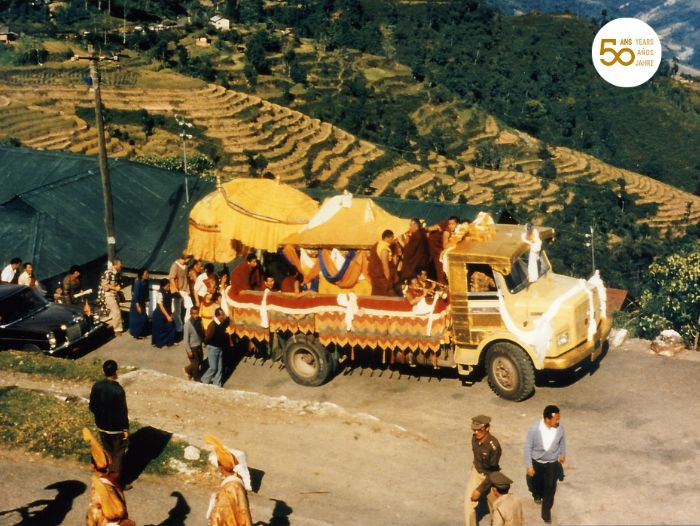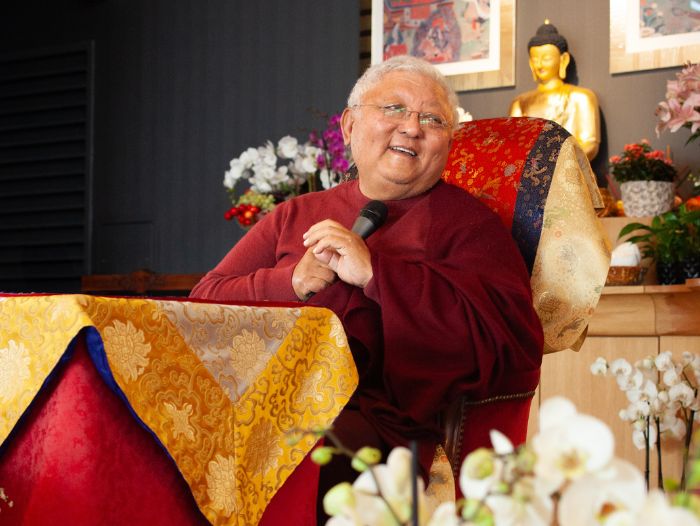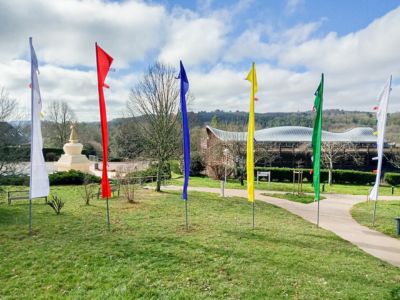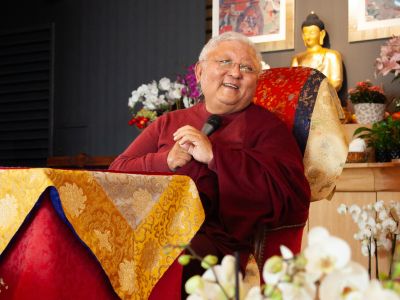– Last update 02/01/2025 –
Thaye Dorje, His Holiness the 17th Gyalwa Karmapa, explained the importance of the Five Royal Sutras, which are paths of practice. Among them, the Sutra of Excellent Conduct Aspirations, also known as Samantabhadra’s Wishing Prayer, represents the aspiration path. The bodhisattva Samantabhadra’s wishing prayers are a model for all to follow. Regularly recited by practitioners of all traditions, they are a path that, as Karmapa says, “is a way of consciously dreaming.”
Tseyang Rinpoche introduce the second of the Five Royal Sutras.

Tseyang Rinpoche, fourth of this name, is the tulku of a tibetan mahasiddha. In 1996 he was formally recognized by the XIV Shamar Rinpoché during the Kagyu Monlams in Bodhgaya. He finished his studies and obtained his certification from the Vikramashila Buddhist Institute. He also accomplished a traditional retreat of three years in Pharming (Nepal) and currently resides at St Jangchub Choling monastery in Pokhara, the monastery of Shangpa Rinpoché.
Information
Teacher: Tseyang Rinpoche
Translation: This teaching is given in Tibetan and translated into French. If you wish to follow this course in another language (English, German, or Spanish), please fill out this form before mars 1st.
Useful Texts
- You can find Karmapa’s explanations along with the five sutras in the booklet The Five Royal Sutras made available as a downloadable PDF by karmapa.org.
- You can also find the translation of this sutra and a commentary by Shamar Rinpoche in The King of Prayers: A Commentary on the Noble King of Prayer of Excellent Conduct (La Remuée, Rabsel Editions, 2013)
Course Fee







